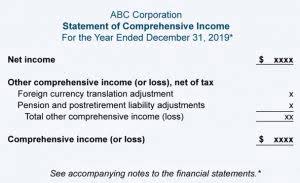
A higher inventory valuation how to calculate fifo inventory can improve a brand’s balance sheets and minimize its inventory write-offs, so using FIFO can really benefit a business financially. While there is no one “right” inventory valuation method, every method has its own advantages and disadvantages. Here are some of the benefits of using the FIFO method, as well as some of the drawbacks. For example, say your brand acquired your first 20 units of inventory for $4 apiece, totaling $80. Later on, you purchase another 80 units – but by then, the price per unit has risen to $6, so you pay $480 to acquire the second batch.
- Not suitable for year-end reporting or official financial statements.
- When all of the units in goods available are sold, the total cost of goods sold is the same, using any inventory valuation method.
- When calculating inventory and Cost of Goods Sold using LIFO, you use the price of the newest goods in your calculations.
- In addition, many companies will state that they use the “lower of cost or market” when valuing inventory.
LIFO and FIFO: Advantages and Disadvantages
- The cost of goods sold for 40 of the items is $10 and the entire first order of 100 units has been fully sold.
- It reduces the impact of inflation, assuming that the cost of purchasing newer inventory will be higher than the purchasing cost of older inventory.
- Also, LIFO is not realistic for many companies because they would not leave their older inventory sitting idle in stock while using the most recently acquired inventory.
- Net income will be higher, using the FIFO method of accounting inventory, and the cost of goods sold will be lower since the lower price will be used to calculate that figure.
- So the ending inventory would be 70 shirts with a value of $400 ($100 + $300).
- In other words, the older inventory, which was cheaper, would be sold later.
You can use our online FIFO calculator and play with the number of products you sold to determine your COGS. Using FIFO, the COGS would be $1,100 ($5 per unit for the original 100 units, plus 50 additional units bought for $12) and ending inventory value would be $240 (20 units x $24). With this level of visibility, you can optimize inventory levels to keep carrying costs at a minimum while avoiding stockouts. If you have items stored in https://www.bookstime.com/ different bins — one with no lot date and one with a lot date — we will always ship the one updated with a lot date first.
How does the FIFO method affect taxable profits?

More expensive inventory items are usually sold under LIFO so the more expensive inventory items are kept as inventory on the balance sheet under FIFO. Not only is net income often higher under FIFO but inventory is often larger as well. Therefore, we can see that the balances for COGS and inventory depend on the inventory valuation method. For income tax purposes in Canada, companies are not permitted to use LIFO. As we will discuss below, the FIFO method creates several implications on a company’s financial statements.
FIFO Method Formula
FIFO means “First In, First Out.” It’s an asset management and valuation method in which older inventory is moved out before new inventory comes in. There are other valuation methods like inventory average or LIFO (last-in, first-out); however, we will only see FIFO in this online calculator. FIFO works best when COGS increases slightly and gradually over time. If suppliers or manufacturers suddenly raise the price of raw materials or goods, a business may find significant discrepancies between their recorded vs. actual costs and profits. The FIFO valuation method generally enables brands to log higher profits – and subsequently higher net income – because it uses a lower COGS.


We’ll explore how the FIFO method works, as well as the advantages and disadvantages of using FIFO calculations for accounting. We’ll also compare the FIFO and LIFO methods to help you choose the right fit for your https://www.instagram.com/bookstime_inc small business. FIFO is the best method to use for accounting for your inventory because it is easy to use and will help your profits look the best if you’re looking to impress investors or potential buyers. It’s also the most widely used method, making the calculations easy to perform with support from automated solutions such as accounting software. It’s recommended that you use one of these accounting software options to manage your inventory and make sure you’re correctly accounting for the cost of your inventory when it is sold.

